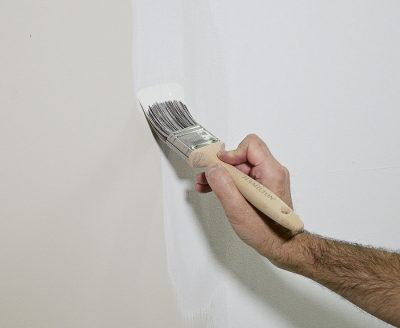Why the ‘feel’ of a paint brush matters
 Professional decorating tools manufacturer, Hamilton explains why the ‘feel’ of a paint brush is so important.
Professional decorating tools manufacturer, Hamilton explains why the ‘feel’ of a paint brush is so important.
Recent research carried out amongst professional decorators shows that, ‘the feel’ of the paint brush ranked number 4 in the top ten most important factors when choosing a brush. But what is ‘the feel’ and why is it so important?
Put simply, ‘the feel’ refers to the way the paint brush feels in your hand. Think about it – this tool is in your hand for eight hours a day – it’s like an extension of your arm. If it feels uncomfortable in anyway, your mind will not be on the job, focus will be lost and it’s likely that the finished result will suffer. Not great in an industry where your reputation matters.
Even more worryingly, aches and pains can develop leading to more serious conditions like repetitive strain injury (RSI).
So, both financially and health-wise, ensuring that your brush has the feel is incredibly important.
Sarah Coussens, Brand Manager – Trade at Hamilton said, ‘Talking to professional painters and decorators for our research highlighted the ways in which the feel of the paint brush can impact them and their jobs.
‘Comfort was a big issue with many stating that without comfort, there was little control – and reduced control had a negative effect on their confidence in the finish. Many compared it to holding a pen, in that the paint brush has to be balanced in the hand, easy to use and allow a flow to develop whilst they are painting.
‘In fact, one respondent said, ‘The feel is crucial…your paint brush is an extension of you…and displays your talent…you couldn’t be a good footballer with a burst ball!’ This statement clearly demonstrates how passionately you professional decorators feel about the results that they deliver to their customers and how they look at every aspect of their tools to ensure they can achieve the best outcome on their jobs.’
Avoiding injury
The repetitive movements that are part of the painting process can present a hazard, especially when your tools don’t ‘fit’ you properly. Repetitive strain injury (RSI) is a real issue for some.
Several areas of the upper body can be affected but pain in the hands and wrists is most likely for professional decorators. Symptoms that start off as a mild ache can quickly develop into more severe pain and swelling requiring medication, physiotherapy and extended periods of rest, all of which may impact your business.
Advice on the NHS website includes ensuring that all aspects of your workplace are as comfortable as possible and that includes the feel of your paint brushes being right for you.
Says Sarah; “Hamilton invests heavily in its research and development, employing not only designers, materials specialists and chemists but also consulting with its professional decorating customers to make sure they deliver the high-quality range of paint brushes.
“From the filaments, to the ferrule to the handle, Hamilton carefully considers how each component will work for the decorator, aiming for not only a professional finish but also a comfortable experience – the essence of ‘the feel’.
“Well-balanced beavertail wooden handles that sit perfectly in the hand or longer handles that are easy to hold, like a pencil, came top in their research. Customers said that they give great control when cutting in or painting in tricky spaces and are designed to satisfy discerning decorators”.
Sarah concluded, “Working closely with professional decorators gives us real insight into what they want and need in a paint brush. And whilst describing ‘the feel’ might sometimes be elusive, we like to think that we have captured its essence within our brushes”.
Why the “feel” of a paint brush matters








